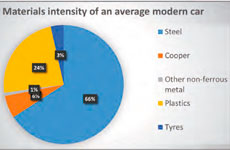
Categorías
Publicaciones
Sustainability of HSR as a mass transportation mode in terms of efficient use of natural resources
5/7/2018

The global economic system depends on the sustainable use of natural resources some of which are renewable whilst the others are finite and non-renewable. There has been an increasing need to reduce the use of non-renewable resources particularly within the transportation sector, which is the major consumer of fossil fuels and thus responsible for most of the carbon dioxide emissions and pollution worldwide. High-Speed Rail (HSR) can provide a more sustainable and efficient use of energy and land whilst reducing emissions and pollution compared with road transport and other modes of transport.
The reported research takes the form of an investigation and critical evaluation of key existing factors that influence the sustainability of HSR in terms of the efficient use of natural resources. From the evidence that has been gathered from different resources and related critical evaluation, conclusions can be made to show that the development of HSR systems will improve the sustainability of transport in general and reduces the amount of non-renewable natural resources used by the transport industry. The secondary data methodology has been used in this research supported by empirical evidences. Most of the data was gathered from the internet including in depth research of HSR in selected countries, available railway statistics and relevant European and Institutional publications.
The main findings are that in many cases, HSR can bring a benefit for society by contributing to the reduction of carbon dioxide emissions produced by the transport industry, reduces the consumption of raw materials, and increases the use of sustainable energy. The expected outcomes of this research will contribute to the development and advances of more sustainable HSR systems that can meet the growing demand for travel due to the continuing growth of the world population and the increasing activities related to business, leisure, and social needs.
Descargar artículo (pdf) »


